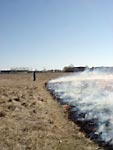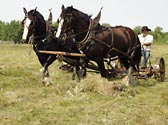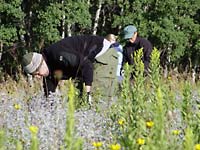Conservation: Native Landscaping and Seed Harvest

Conservation of grasslands is important to the survival of many of Manitoba’s rare or endangered species. However, protection alone is not enough to keep a prairie healthy. Historically, grasslands were shaped by fire, drought and grazing with seasonal periods of rest. All animals, from ground squirrels to bison, played a role in the prairie ecosystem. Prairie plants are able to survive under the pressures of grazing by large herds of bison and are adapted to fire. Fire breaks down the dead vegetation, returning nutrients to the soil and gives the sun an opportunity to warm the ground and allows for germination a native plant species. The extensive root system of native prairie plants store energy to allow them to re-establish days after fire or grazing, while the growth of weedy species is slowed by these occurrences.

Prescribed burns are one of the most effective and natural grassland management tools that the Living Prairie Museum utilizes. When practised with caution and common sense, controlled burns are a safe and ecological way to sustain the tall grass prairie. Mowing, like fire is another way of managing the prairie. It simulates the trampling and grazing of hundreds of bison. The Living Prairie Museum has contracted a farmer with a team of Clydesdales to pull a (circa 1910) horse cutter over designated tracts of the prairie.

Hand weeding of the invasive weedy species of plants that encroach on the prairie is an effective but very time-consuming method of maintenance for the museum. Summer Student Grant Programs are the museum’s only means to tackles the “hand weeding programs”. Canada thistle, caragana, and aspen are thinned from the prairie in this manner. Spot burning is another method of invasive weed eradication that the museum is presently exploring.

